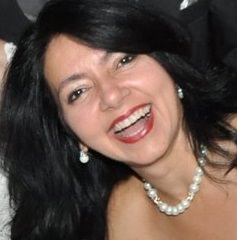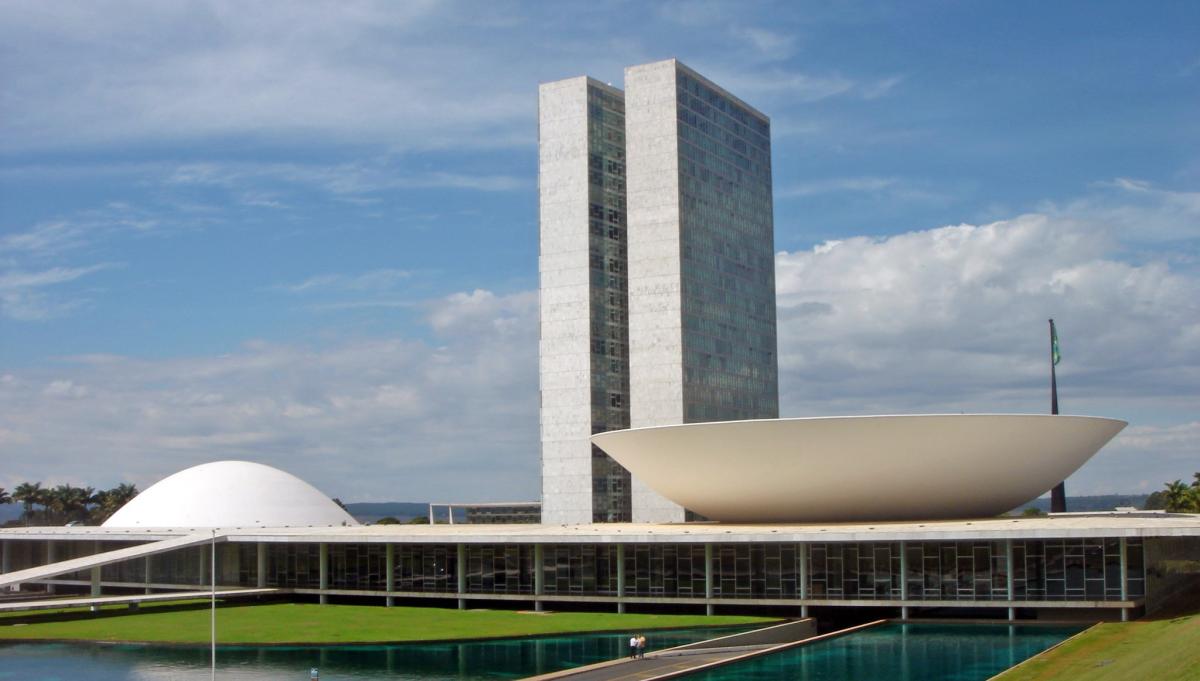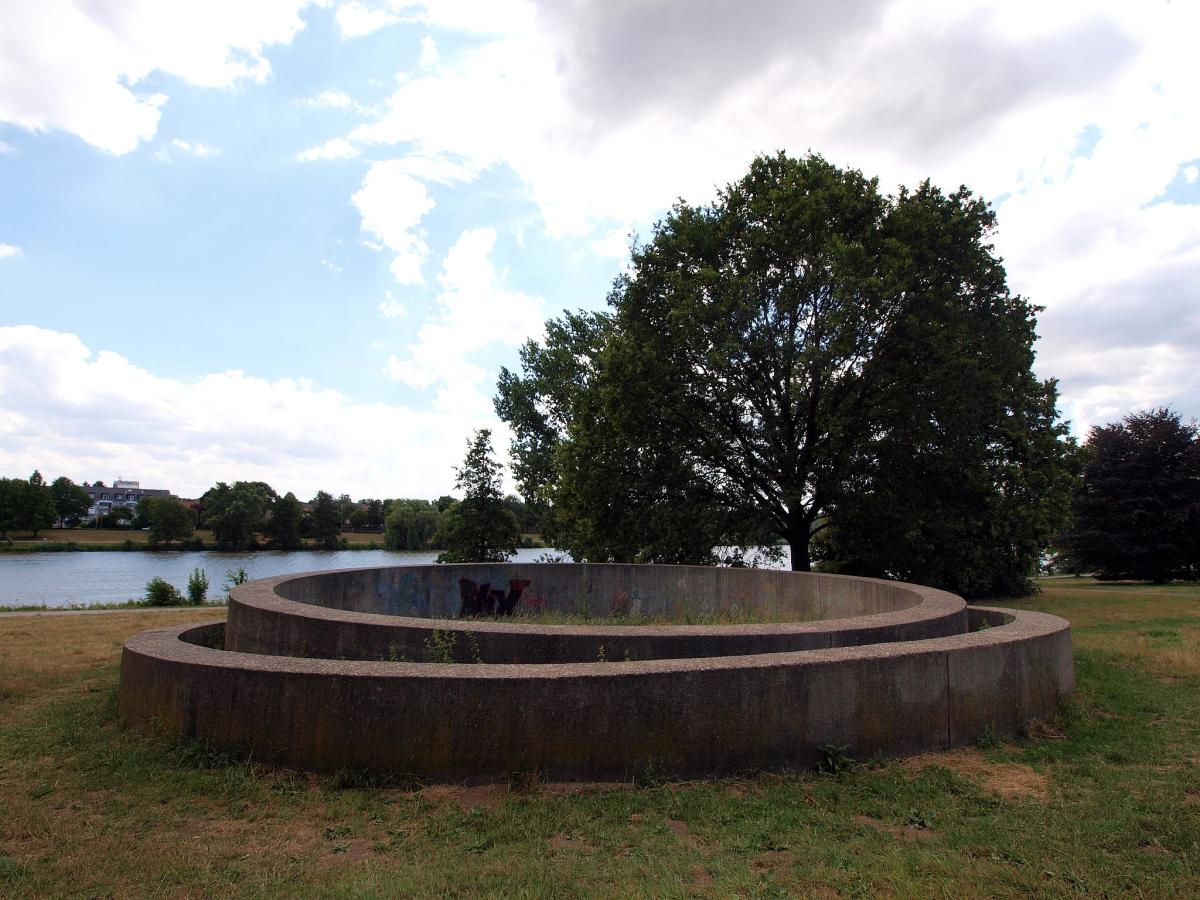
In front of the window where I work,
In the quiet hours when everything sleeps,
Eyebrow and manly, like an oak,
Thick huge tree rises.The zephyr for a moment curls a branch
To your beard: and, that is, that transforms
The wind or my gaze, the huge tree,
Erected before the window where I work,Takes the appearance of a rude head,
Sleepy and wild swaying
In a strange, fantastic attitude.And, set to contemplate it, this soul cares
See under the blue sky, diaphanous and soft,
The forehead raise, Leo, the last druid.
(MEIRELES, 2013, p.23)
Cecília Meireles' language is poetic, melodious, rich and full of metaphors. His Poetry is from the Second phase of Modernism and received influences from Romanticism, of Parnassianism and Symbolism. Her sonnet summarizes a given moment in which the poet works in front of a window and observes what is outside.. The blue sky and the tree that shakes its branches and leaves due to the wind blowing draw your attention.. The two external elements embrace the window space and the observer’s gaze. The simplicity of the scene that the author observed turned into a beautiful sonnet, fourteen-line poetic form, that Cecília Meireles used to summarize what she saw. The central idea was to give a poetic shape to two common elements and see the unusual in them.; highlight the simple and make it protagonist. In artistic manifestations, This trait was evident in the Minimalist style.
Minimalism was born in the United States between 1950 and 1960 and was spread across several countries. With simplicity as the protagonist, the style still brought objectivity and the lack of narrative to Art.
The period was highlighted by several events mainly in the area of Technology. The Soviet Union, in 1957, launched the first satellite; the first space flight was piloted by Yuri Gagarin, in 1961; in 1962 the world's first satellite was launched, the Telstar; in 1963, Kodak created the first high-speed camera; to 21 of July 1969, Neil Armstrong, american astronaut, became the first man to step on the Moon.
In the field of Medicine, the year of 1961 marked the time of commercialization of the contraceptive pill; and the first heart transplant was performed in 1967. The period also featured the Vietnam War (1964); Kennedy's assassination (1963); between 1966 to 1976, China's Cultural Revolution by Mao Tse Tung, who persecuted his opponents, killing hundreds of thousands of people; and the beginning of construction of the Berlin Wall, in 1961, by East Germany. In the field of the seventh Art, debuted in 1968 the movie 2001 – A Space Odyssey; and artistic manifestations saw Art Nouveau flourish in 1960, in France. In Brazil, one could see the flourishing of Architecture, with the construction of Brasilia, by Oscar Niemeyer, between 1957 and 1960. The Gothic style, Minimalism emerged as an artistic style, in New York, in 1966.




Architecture and Design
Simplicity of form is not necessarily simplicity of experience. (Robert Morris in DREAMED, 2005, p.78)
Simple and sophisticated, Minimalist Architecture1 followed the idea of reducing elements and simple design. The use of geometric shapes denotes the clear influence of Cubism. Gives Bauhaus came the idea of innovation and simplicity, bringing together beauty and functionality in a single proposal. The result was an exquisite production, full of natural lighting, with reduced ornamentation, which led to the final idea of lightness.
This characteristic was clear in the constructions of Ludwig Mies van der Rohe (1886-1969), one of the most important architects of the 20th century, author of the well-known phrase “less is more” (less is more). Born in Germany, naturalized american, He designed the innovative project for the “860-880 N” towers. Lake Shore Drive” (Fig. 1) a complex of buildings 26 floors, located our numbers 860-880 of busy Chicago Avenue, in the United States. The mature and innovative construction is clad in glass, which reduces the division between the internal and external area. This feature provides the idea of lightness, of natural lighting and is followed by architects nowadays.

![Fig. 6 – Tony Smith, Free Ride, Museum of Modern Art, New York, 1962. Pmoore66; Tony Smith [1], Public domain, via Wikimedia Commons.](https://www.obrasdarte.com/wp-content/uploads/2024/10/Minimalismo_Fig_6_Tony_Smith_Free_Ride_Museu_de_Arte_Moderna_New_York_1962.jpg)

Making use of curved lines and simple shapes, the great Brazilian architect Oscar Niemeyer2 (1907-2012), recognized worldwide, also went through the Minimalist style. In his projects, natural resources and elements were addressed and lighting effects were explored.. Among his best-known works are the Church of São Francisco de Assis in Lagoa da Pampulha, in the State of Minas Gerais; the Pampulha Art Museum; the Gustavo Capanema Palace, in Rio de Janeiro; the Copan Building in São Paulo; the Brasilia Cathedral; the National Congress in Brasilia (Fig. 2); in addition to other projects throughout the country and outside Brazil.
The architects and designers Philippe Starck also strolled through the minimalist style, (1949), from France; John Pawson (1949), from the United Kingdom; e Shiro Kuramata (1934-1991), of Japan. Opposing the movements of the time, Shiro Kuramata's creativity innovated Japanese design. Along with great names of the time, his idea was to explore materials, creating a unique style. Stripping away the typical style of the years 80, his idea was to use neutral colors and reduce the shape, becoming famous for his use of industrial materials and acrylic yarn in his projects. Kuramata worked on the creation of interior spaces and furniture pieces, like the Miss Blanche chair (Fig. 3), from 1988. The lightness of your piece is due to the transparency of the material used., clear acrylic resin; and aluminum. Adorned by red flowers inside the acrylic, the flowers seem to fly along with the wind and the chair, Due to its transparency, it integrates into any environment.
1 Minimalist Architecture
2 Works by Oscar Niemeyer in Brazil
Sculpture
The artist's goal should not be to instruct the viewer, but give you information. The serialist artist does not try to produce a beautiful or mysterious object, but acts only like a clerk who catalogs the results of his labors. (Sol Lewitt in DREAMED, 2005, p.68)
The author of the phrase, Sol Lewitt (1928-2007), He was a member of the Minimalist movement in the United States and worked in Painting. For him, the artist is a cataloger, It brings together shapes and colors, how to store the data, in the space of each work.
Donald Judd (1928-1994) he was also a painter, but in his career he began to dedicate himself to Sculpture, interested in the relationship of the object with the ground and the space it occupies. His goal was to work with shape and colors in a simple way.. His sculpture in Münster (Fig. 4) seems to be in an eternal circular motion, longing to fit the two circles. The landscape welcomed the artist's work, which seems to have belonged to the environment forever.. In his other sculptures, often produced in factories, he used materials such as iron, wood and aluminum, like the series of sculptures in “Stacks”, in which he worked with repetition of rectangles attached to the wall.
Anthony Caro (1922-2013) He was also a Minimalist sculptor and his inspiration came from the period in which he worked with Henry Moore (1898-1986), known for abstract sculptures. In the 1960, Anthony Caro broke away from figurative work and started using materials such as iron and steel in his works. Welded steel, your Salient Piece (Fig.8) appears to stand out on a flat surface, for which it seems to have been tailor-made. The contrast between the brown color of the piece and the plain background of the wall seems to highlight the idea of movement., as if the whole ensemble was ready to leave the place.



Dan Flavin3 (1933-1996) was considered one of the main precursors of Minimalism and worked in several areas, including Painting,, Sculpture and Installations. His work with fluorescent light tubes began in 1963 and gave him exposure in a New York gallery in 1964, After that, they gained space in more galleries and became larger in size. Its illuminated installations organized through colored lines are joyful representations of Art.. Aligned, amidst the architectural complex to which they belong, the elegant interventions in the spaces to which they belong, invite the observer to participate in the work, through sensations. Space exploration in its various possibilities, making use of light and shadow brought a new perspective to the field of Art and perhaps more than that, the use of light leaves an evident sense of usefulness for the artistic object.
3 Dan Flavin
Sign up to receive Event News
and the Universe of Arts first!
Painting
Some recent wall boxes appear hollow… some recent paintings redefine color as luminance (reflected light). And they use this new color spectrum so that no illusion or depth is possible at all.. (Jo Baer in DREAMED, 2005, p.36)
Perhaps the style came with the intention of seeking balance for a period full of information in so many areas of knowledge, discarding the futile, synthesizing and bringing to light the essential, making it clear that Art has its own reality and does not need external things.
Josephin Gail Baer (1929) is an American painter associated with Minimalism who lives and works in Amsterdam, in the Netherlands. In the 1960, His works revealed the contemporary spirit; and from the years 1970 the artist's style began to express subjectivity. His works seem to add symbols, words and images without a narrative end, what the artist herself calls “radical figuration”. This content was clear in the work “Testament of the Constituted Powers” (Fig. 9) on which camels, mountains, flowers, ground, roots and fissures converge at the same point at the bottom of the screen, as if everything we knew would end at that moment. The symbolism of the work is reinforced by the intense nature with which the artist works.. On display at the Amsterdam Museum, the work Twilight (Fig. 10) reveals a deep understanding of the world by the artist. Bringing together mythical elements and nature, the image seems to open a crack at several points where all the immense standing stones can converge. The white space in the middle allows the observer to create their own narrative about what is actually occurring.. The twilight in the lower left doesn't seem to care what happens to the rest of the scene.
During the years 1960 Sol Lewitt (1928-2007) worked with cubes in the midst of organized structures, leading the eye to construct figures. Next, Lewitt also worked with murals in which he played with the perception of volume and shapes. The Public Installation at the Olympic Sculpture Park (Fig. 12) from 2014 presents the repetition of the cubic shape, which leads the gaze to reinforce such a configuration. Each side and background of each image has bright colors, as if everything was actively pulsing, bringing the possibility of variations and exchange, changing the meanings of those who observe the work.


Final Considerations
Life doesn't last; art doesn't last. Does not matter… I think it's as much an artistic conflict as it is a life conflict.. (Eva Hesse in DREAMED, 2005, p.68)
Art speaks and contradicts itself; she oscillates, sometimes it comes and goes, bringing and taking what is best for each era. This is how the History that Art wrote was constructed. In the case of Minimalism, the true meaning of Art, without the elements of reality they created more than simply something linked to abstraction, but pure art, without cuts and without references to the known world. Fruit of Constructivist consciousness, Art became even more linked to geometric shapes and pure colors, revealing the purity of Art by itself.
In music production, Minimalism presented itself with the repetition of small excerpts, without many musical notes, which provides a pleasant listening arrangement. Among the musicians of the style are Philip Glass4 (1937), Steve Rich5 (1936) e Arvo Part (1935). The Minimalist style also passed through Literature, with micro-stories or mini-stories, with economy of words, simple scenarios and common places. In this field, among the representatives are the names of Raymond Carver (1938-1988) e Ernest Hemingway (1899 -1961).
The remaking of Art is constant and never-ending, It's like a coming and going of styles that reinvent themselves. The artist appreciates this constant creation and our eyes are grateful for the Beauty that each style defined.. With each new way of doing Art, we are closer to true Art, that warms the senses and gives us sensations, that promotes perceptions of the good and true world of ideas.
Some came in chains
Hanging, but tired.
Too tired, but to stumble.
Thinking and hating are over
Thinking and fighting are over
Backing down and waiting are over.
This cures a long campaign,
Making death easy.
(HEMINGWAY, 1970, 20)
4 Philip Glass – music
5 Steve Reich – music
References:
- ANDRADE, Mário. complete poems. São Paulo: Editora Itatiaia, 1987.
- BANDEIRA, Manuel. Bandeira de Bolso. Porto Alegre: L&PM Pocket, 2008.
- BAYER, Raymond.História da Estética. Lisboa: Editorial Estampa, 1993. Tradução de José Saramago.
- BILAC, Olav.Poetic Anthology.Porto Alegre: Ed. L & PM Pocket, 2007.
- CHILVERS, Ian; ZACZEK, Iain; WELTON, Jude; BUGLER, Caroline; MACK, Lorrie. História Ilustrada da Arte. São Paulo: Publifolha, 2014.
- FARTHING, Stephen.Tudo Sobre a Arte. Rio de Janeiro: Sextante, 2011.
- GASSET, Jose Ortega and.The art of humanization. 5 to. Edition. São Paulo: Ed.Cortez, 2005.
- GOMBRICH, E.H.A História da Arte. Rio de Janeiro: Editora Guanabara, 1988.
- GUILLAUME, Apollinaire. Alcohols and Other Poems. São Paulo: Editora Martin Claret, 2005.
- HAUSER, Arnold.História Social da Arte e da Literatura. São Paulo: Martins Fontes, 2003.
- HEMINGWAY, Ernest. The Collected Poems of Ernest Hemingway. New York: Haskell House Publishers, 1970.
- DREAMED, Daniel; GROSENICK, Uta. Minimal Art. Colônia, Germany: 2005.
- MEIRELES, Cecília. Espectros. São Paulo: Editora Global, 2013.
- MOISÉS, Massaud. Brazilian Literature through Texts. São Paulo: Editora Pensamento Cultrix Ltda., 1971.
- MATHEW, Vinícius. Antologia Poética. São Paulo: Companhia das Letras, 2009.
- GRANDSON, João Cabral de Melo. Museu de Tudo. Rio de Janeiro: Livraria José Olympio Editora, 1975.
- PROENÇA, Graça. Descobrindo a História da Arte. São Paulo: Editora Ática, 2005.
- QUINTANA, Mário. Quintana de Pocket. Porto Alegre: L&PM, 2007.
- SAINT-EXUPÉRY, Antoine de. The little Prince. Rio de Janeiro: Editora Agir, 1977. SCHILLER, Friedrich. A Educação Estética do Homem. São Paulo: Publisher Miniatures, 2002.
You might also like:
- Contemporary Art, Pop Art by Rosângela Vig
- Contemporary Art, Optical Art – Op Art, by Rosângela Vig
- Modern Art – Expressionism in Brazil – Portinari o Pintor e o Poeta, by Rosângela Vig
- First Traces of Modern Art – Abstract Expressionism in Brazil by Rosângela Vig
- Modern Art – Abstract Expressionism by Rosângela Vig
- First Traces of Modern Art – Impressionism in Brazil by Rosângela Vig
- Modern Art – Surrealism by Rosângela Vig
- Modern Art – Abstractionism by Rosângela Vig
- Modern Art – Cubism by Rosângela Vig
- Modern Art – Expressionism by Rosângela Vig
- First Traces of Modern Art – Symbolism by Rosângela Vig
- First Traces of Modern Art – Post-Impressionism by Rosângela Vig
- First Traces of Modern Art – Impressionism by Rosângela Vig
- Romanticism in Brazil by Rosângela Vig
- Romanticism by Rosângela Vig
- The Neoclassical Art in Brazil by Rosângela Vig
- The Rococo in Brazil by Rosângela Vig
- The Neoclassical Art by Rosângela Vig
- Rococo by Rosângela Vig
- How appears the Surreal Work by Rosângela Vig
- The Baroque in Brazil by Rosângela Vig
- Baroque by Rosângela Vig
- Mannerism by Rosângela Vig
- Flemish Art – Renaissance in Northern Europe by Rosângela Vig
- Renaissance by Rosângela Vig
- The Contemporary, A little about the Urban Art by Rosângela Vig
- The Naive Art – Ingénue Art by Rosângela Vig
- Middle Ages, Byzantine Art by Rosângela Vig
- Middle Ages, Romanesque Art and Gothic Art by Rosângela Vig
- The Roman Art by Rosângela Vig
- Greek Art, Art History in Ancient Greece by Rosângela Vig
- The Egyptian Art by Rosângela Vig
- The Prehistoric Art by Rosângela Vig
- The beauty Art and the sublime Art by Rosângela Vig
- The Game of Art by Rosângela Vig
- The Misunderstood Art by Rosângela Vig
ROSÂNGELA VIG
Sorocaba – São Paulo
Facebook Profile | Facebook Fan Page | Website
Columnist at Website Obras de Arte
E-mail: rosangelavig@hotmail.com
WEBSITE ART WORKS
Group on Facebook | Instagram
LinkedIn | Facebook | Twitter
